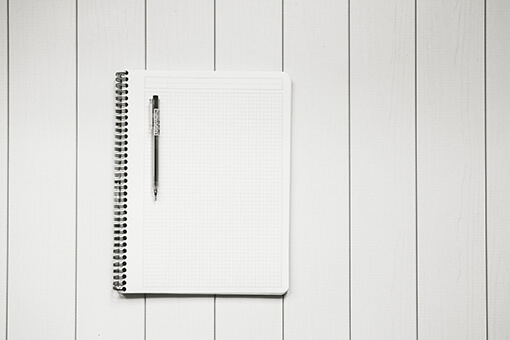Hi! It’s konkaz (@konkazuk) here.
In this blog post, I am going to give some tips that might make your English conversation progress smoothly if you make a habit of them.

Neither grammatically new nor difficult English vocabularies are included in this article’s content but I assume some of English learners in Japan are not aware of these simple facts I have written here, so please have a look and apply them for your future English conversation.
Anyway, here we go!
Including the name of the person you are talking to in the sentence!

Whether it is in private or at work, there are often situations where we meet a bunch of new people at the same time, but it is almost impossible to remember every single person’s name, is it?
I’m not good at memorizing people’s names myself and this fact brings about awkward situations and I need to struggle each time…
However, when I feel a friendly vibe from the person I am talking to or when I feel like knowing more about the person, I try to ask the person’s name once again.
But the important thing here is…
“What do you do next after memorizing the name of the person?”
The thing is that attaching the person’s name within the sentence while you are talking will work very effectively on closing the distance between you and the person.

For example…
Let’s say your name is “Murakami”, and the other person talks to you just like…
“Isn’t it dangerous?”
“I agree with you!”
“Thank you!”
or…
“Isn’t it dangerous, Murakami-san?”
“I agree with you, Murakami-san!”
“Thank you, Murakami-san!”
Which one of these do you feel a friendly vibe from?
The latter one, isn’t it?
You can surely feel an affinity when your name is included in a sentence.

This seems to be a rather simple thing to do, but I presume we Japanese are spilt into two groups between the one that puts this into practice and the one that does not (even when we talk in Japanese).
On the contrary, this seems like just a natural thing to do in Western (and some other) countries.

It’s almost like a “habit level”, isn’t it?
Besides the frequency of including the other person’s name in a sentence is much higher than when we talk in Japanese.
For example, Joe and Maria is having a conversation and it goes like…
“How are you doing, Joe?”
“Hi, Maria. I’m alright, thanks!”
“By the way Joe, you didn’t turn off the light in the kitchen last night, did you?“
“Oh, I’m sorry Maria. I totally forgot…”
As you get closer to each other, I believe the frequency of including the name will go higher.
On the contrary, not including the other person’s name in the sentence during the conversation while you know each other pretty well will bring about some kind of awkwardness in the air.
The reason why there is such a difference about calling the other person’s name during the conversation between in Japan and in Western countries is probably because while you can casually call each other’s name irrespective of age in Western countries, there is this tradition of calling the person whoever is older than you with adding the title “san” to his or her name (equivalent of “Mr” or “Mrs”) as a sign of respect in Japan.

So, from now on, let’s try including the other person’s name within the sentence during the conversations in English.
If you could make a habit of this, the vibe of “being in the conversation” between you and the other person will be greatly increased.
And this will make both of you feel comfortable with the sense of intimacy.
Make a habit of attaching “, please? “

When you use the word “please”, instead of regarding it as the word to use when you ask someone for a favour, simply take it as something to add within a sentence as etiquette.

And also, the word “please” might play an important role of giving an accent to the sentence to keep a good balance of it.
Some people might have a strong impression of “begging” with the word “please”, especially when it is translated into Japanese…
but it shouldn’t be taken that heavily.
“Can you close that door, please?”
“Could you buy some milk on your way back home, please?”
“Will you call me, please?”
“Turn it off, please?”
Just add it at the end of the sentence like the tail of some animals…

Don’t even try to translate it into Japanese.
As I mentioned earlier, include the word as etiquette because it makes things easier. You will feel good and the person who heard it will feel good, too!
And also when it comes to the situations like… somebody is offering something for you, and you are happy with it. Rather than just replying with one word “Yes!”, do it with two words as a set.
“Yes, please!”
And keep this as a habit.
How are you? is not just asking “how you are” ?

Hello. How are you?
We all must have learnt a few ways of responding to this while we were in schools just like…
“I’m fine, thank you.”
“I’m not too bad.”
“I’m good, thanks. And you? … yourself?”
The other person is asking how you are, so nothing is wrong with you telling the person if you are well or sick or whatever, however, this is actually a crucial point where the conversation starts…

How you are going to reply to this will determine how the relationship between you and the other person blossoms in the future!
If you keep sticking to the same old textbook’s robotic way like…
“I’m fine thank you, and you?”
“I’m fine thank you, and you?”
“I’m fine thank you, and you?
then, the other person might start doubting if you are AI or and eventually, you will be hearing only “Hi” from his or her mouth…

So, next time, skip “I’m fine, thank you”- type of response, and start telling something else like…
“Do you know what happened to me on my way home, last night? I was just bra bra bra… ”
or see if you can find something to comment on the other person’s belongings, like…
“Hey, look at the socks you are wearing, today! They are fluorescent, aren’t they? Making my eyes blind, man! … Bra bra bra…”
You can directly start talking like this instead of responding with your usual procedure.
If the person you are talking to is the one you want to get closer, this could be a turning point for you…
However, if you are not a swift responder (like me), you can start with a safe topic like “weather”(a typical subject here in England) for the time being, and meanwhile, try to think about your next move.

…And finally, you can ask before you get asked.
Continue with “How are you doing?” or “What’s up?”, etc. as soon as you have said “Hi, (name)” or “Hello, (name)” and let the other person speak first.
All you have to do is just listen and go with the flow, so this one is probably the easiest way!

At the end of the day, people talk to you because they actually want to have their stories listened!

Summary

So, if you keep these three points, which are…
- Including the name of the person you are talking to in your sentence!
- Make a habit of attaching “, please? “
- Reconsidering how you respond to “How are you?”
in your mind, I’m sure your conversations with others will become better and more comfortable.
These little things could help you bring your English conversation to the next level, so good luck!
konkaz

